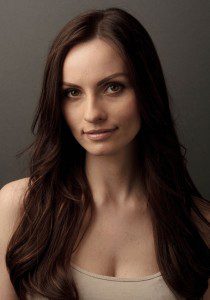The title of Ed Verosky’s latest ebook, Basic Lighting for Portrait Photography, says it all. Each digitally rendered page contains valuable, practical, easily digestible instructions, hints, and tips on how to shine a flattering light on your portrait subjects. To call the book “basic” isn’t a bad thing. Amidst a sea of photography how-to literature, one can easily find material that covers lighting as a general concept — some of it too general and vague, some of it overly technical, some of it leaving the reader with more questions than answers. But Verosky’s new book gets right to the point and sticks to it: in order to shoot great portraits, it’s a must that you get a grasp on the specifics — and the basics — of how to properly light a portrait.
I realize that some people are in the habit of skipping over a book’s foreword or introduction, but recall that I mentioned there’s useful information on every page of this ebook; the introduction is no exception. In fact, it sets the tone for everything to come. Verosky, in his opening statement, acknowledges that portrait lighting is a challenge but is also “something every photographer should strive to learn more about, no matter what their skill level.” It’s an open invitation to all.
Chapter one covers types of light, which Verosky breaks down into three categories: constant lighting, natural lighting, and strobe (or flash) lighting. He gives a brief overview of each type of light (don’t worry, he doesn’t throw around a bunch of physics terms), and explains the benefits and challenges associated with each. In his discussion of natural light — or sunlight — I particularly appreciated his insight about the perceived ease of working with this light source, suggesting that such thinking “has to do with our limited ability to actually control it; it’s not like you can alter the Sun’s output or move and position it around your subject the way you can with lamps, flashes, and studio lights….” This lack of control can, indeed, be a double-edged sword.
In accordance with his notion that any photographer, regardless of skill level, budget, or work space limitations can begin creating good portrait lighting right away, Verosky spends much of the remainder of the first chapter giving a thorough presentation of lighting gear options. He starts with budget-conscious fare such as clamp light kits that can be obtained in any hardware store, and works his way up to studio strobes, flash units, triggering devices, and lighting modifiers (bounce cards, diffusers, reflectors, etc.). Verosky even gives examples of specific lighting setups, photos included for the visually inclined learner.

The “real work” of portraiture lighting begins in earnest in chapter two, where Verosky discusses five basic lighting patterns and why each one works, and provides corresponding photographic illustrations. He is by no means militant in the way these concepts are presented; Verosky refers to the five traditional patterns as “guidelines” and “good starting points for setting up portrait lighting.” The goal is clearly to get the reader started along the right path and, ultimately, encourage experimentation via alternate takes on the basics.
Chapters three through six are essentially procedurals covering four specific lighting scenarios: dramatic portraits, side lighting, full-length lighting, and lighting for head shots. While I termed these sections as being procedural in nature, they are not at all stale or boring. Applying what will become a mantra of sorts, Verosky introduces each lighting style by suggesting that “everything starts with one light.” After establishing a single light foundation, he then shows the reader how to add fill light, hair light, split light; how to incorporate a softbox or umbrella; how to navigate the logistics of lighting a full-length portrait.
Verosky deftly wraps up his treatise by reiterating the idea that portrait lighting “is much less about obeying specific lighting rules as it is about making creative choices that work.” In the author’s view, it’s all about taking his object lessons on lighting and subjecting them to each photographer’s growing confidence and individual style.
Well written and logically organized, Basic Lighting for Photography is an excellent read that succeeds not only as a straightforward, uncomplicated technical manual aimed at those who wish to expand their photography skill set, but also as a source of inspiration for those who desire to grow creatively.
You can grab a copy of the guide here.







